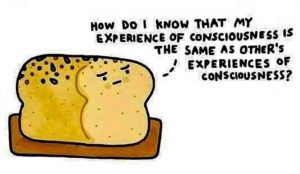Q: I am struggling to reconcile the empirical account of what may be called ‘creation’ (the Big Bang, followed by billions of years of mechanically unfolding interactions with no sense of self, until the absurdly *recent* emergence of consciousness after further millions of years of blind evolution) with the advaitic concept of ‘creation’ (the absolute Being, timeless and changeless, manifesting in Itself as experience).
A: The ‘bottom line’ of Advaita is that there has never been any ‘creation’. There is only Brahman. Everything is Brahman. You are Brahman. The ‘universe’ is simply a ‘form’ of Brahman, to which you have given ‘names’ implying that there are separately existing entities.
The scriptures (from which Advaita derives) certainly give ‘empirical accounts’ of a creation. But these are interim explanations only to satisfy the enquirer temporarily until ready to accept the truth.
Science does attempt to rationalize consciousness as an emergent phenomenon, but it is doomed to fail because it cannot objectify the ultimate subject. See my article on ‘Consciousness – Not Such a Hard Problem’ beginning https://www.advaita-vision.org/consciousness-not-such-a-hard-problem-1-of-2/. Also https://www.advaita-vision.org/science-and-consciousness/. Science in general is intrinsically unable to address the problems dealt with by Advaita. See my 4-part article on ‘Science and the nature of absolute reality’ beginning https://www.advaita-vision.org/science-and-the-nature-of-absolute-reality-part-1/, which may contain useful pointers. And the 3-part article by Dr. Sadananda beginning https://www.advaita-vision.org/science-and-vedanta-part-1/.
Continue reading
 The Post on “
The Post on “ Narada climbs up the staircase from Name up to Spirit almost hopping and jumping spurred by his own enthusiasm and curiosity. He asks his venerable teacher at each step after meditating, “What’s next?” He, however, falls absolutely silent after meditation at the level of Spirit, the 15th itself. He has another flight of steps to take to reach the Ultimate, the Absolute!
Narada climbs up the staircase from Name up to Spirit almost hopping and jumping spurred by his own enthusiasm and curiosity. He asks his venerable teacher at each step after meditating, “What’s next?” He, however, falls absolutely silent after meditation at the level of Spirit, the 15th itself. He has another flight of steps to take to reach the Ultimate, the Absolute! Shankara opens his commentary on the 6th chapter of chAndogya with a very brief intro. bringing out the context of Svetaketu’s story and its relationship (sambandha) to the rest of the Upanishad. He says that the 6th chapter explains two important points, which are:
Shankara opens his commentary on the 6th chapter of chAndogya with a very brief intro. bringing out the context of Svetaketu’s story and its relationship (sambandha) to the rest of the Upanishad. He says that the 6th chapter explains two important points, which are: Quoting from the talk of an Advaita teacher on the message of the aitareya Upanishad:
Quoting from the talk of an Advaita teacher on the message of the aitareya Upanishad: